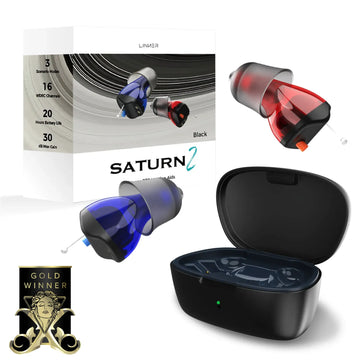
The pleasure of watching a good movie or TV show often hinges on one simple thing: being able to understand what the actors are saying. Unfortunately, for many older viewers, this has become a major challenge.
Modern filmmaking techniques often bury low, mumbled dialogue beneath loud music and intense sound effects. For seniors whose hearing often struggles to separate out speech from background noise, this can turn an evening of entertainment into a frustrating battle. New digital tools coming online, such as AI-driven audio dubbing tools, promise to fix just that. They work by using smart technology to essentially replace the muffled voices with a clear track, finally bringing crystal-clear dialogue back to the screen.
The Struggle to Hear: Why Modern Dialogue Is So Muffled
It makes many viewers, in particular seniors, feel they are missing out due to how the movies and TV shows are made today. This isn't just actors whispering; it's about how sound is recorded and mixed. Here’s what the struggle is all about.
- The Technical Challenges
The root of the problem is in sound design, which all too often favors "immersiveness" over clarity. Part of this is a process called high dynamic range: the gap between the loudest noises, like explosions or music, and the quietest, like dialogue, is enormous.
Often, sound mixers will leave the music and effects very loud for tension purposes. Then you go to watch this in your own home with a standard TV, its small speakers can't handle the layering. The dialogue track, which carries the actor's speech, gets lost beneath the thundering soundtrack.
Another problem is that many modern actors speak their lines extremely softly or in relaxed, rapid speech that is difficult to catch even for those with perfect hearing. Directors often avoid re-recording mumbled dialogue in a sound studio, instead leaving poorly recorded "location sound" in the final cut.
- Age-Related Hearing Difficulty
Normal age-related changes in hearing make these technical issues far worse. Hearing loss in older adults often includes two key difficulties: high-frequency loss and auditory processing.
It becomes harder to hear the subtle, high-pitched sounds of consonants, such as 's', 't', 'k', and 'f'. This makes it tough to distinguish between similar-sounding words. Also, the brain's ability to filter out background noise and only focus on the speech is slower. When a scene has quiet, mumbled speech plus loud music, the brain finds it almost impossible to isolate and understand the dialogue. This leads to excessive mental effort and tiredness.
How AI Voice Technology Provides a Solution
Instead of trying to surgically remove the mumbling and background noise from a bad audio track, new digital tools take a simpler, more effective approach: they create an entirely new dialogue track that is perfectly clear. This revolutionary fix ensures that viewers get the emotion of the performance without the difficulty of listening.
The solution utilizes the same central technology employed in translating films into foreign languages. First, the original muffled and often incomprehensible script is transcribed into a clean text version. That text is then used to feed an advanced AI program, which, in turn, produces a new voice track. It says the same lines but with perfect clarity and articulation from a studio-quality standard. More precisely, such a process of creating and replacing an existing language track with a generated one, even if it is the same language, is an application of modern audio dubbing technology. By means of this AI, the new voice perfectly matches the actor's original tone and timing, but without any of the muddiness or low volume.
Advantages of Using Re-Generated Dialogue
Advanced AI-driven solutions offer a number of advantages over traditional methods, such as merely increasing the volume or using subtitles.
- Instant Clarity and Enunciation
The voice model is specially developed for the perfect articulation of each word. This system uses advanced text-to-speech capabilities that eliminate natural imperfections, whispers, and blurring of the voice, which makes human speech on film often indistinct.
- Emotional Context Maintenance
A common fear is that a synthetic voice would sound robotic and lack emotion. Modern AI voice technologies are, however, very advanced and can control prosody, or the rhythm, stress, and intonation of speech.
It can then be tuned to make the now intelligible voice retain the emotion of the original performance.
- Independent Volume Control
For those accustomed to viewing the film at home, this is perhaps the biggest technical win. Since the new dialogue is a separate, dedicated track, it's easily isolated from the other sounds.
This separate track can be used to provide a "Dialogue Clarity" feature by modern streaming applications and smart TV platforms.
Restoring the Full Enjoyment of Media
This technology goes a long way in improving the lives of senior viewers by digitally solving the problem of mumbled dialogue.
- Reduced Auditory Strain: The constant struggle to hear forces the brain to work harder, resulting in mental exhaustion and headaches. Providing a clean, clear dialogue source, the technology significantly reduces the cognitive load on seniors to simply relax and engage in the story as intended.
- An Alternative to Subtitles: Although subtitles are helpful, they require viewers to look away from the visual action, distracting them from the performance and cinematography. Re-generated dialogue allows viewers to enjoy the visual artistry and the actor's facial expressions.
- Bridging the Accessibility Gap: As media consumption shifts overwhelmingly to streaming and home viewing, it is of the essence that this content remains accessible to all ages. These AI tools ensure that technical and stylistic choices in filmmaking do not inadvertently exclude a large portion of the audience.
Conclusion
Mumbled dialogue has long been a source of frustration for seniors in modern film and television. Through AI voice dubbing, the industry is finally offering a simple yet effective solution by creating a hyper-clear speech track that is separate from the original dialogue. This minimizes the listening effort, reduces stress, and overcomes age-related auditory challenges.


![Linner Mercury Clarity OTC Hearing Aids [FSA & HSA Eligible] Linner](http://www.linnerlife.com/cdn/shop/files/Linner-Mercury-Clarity-OTC-Hearing-Aids-_FSA-_-HSA-Eligible_-Linner-110038953.webp?v=1725853434&width=360)

